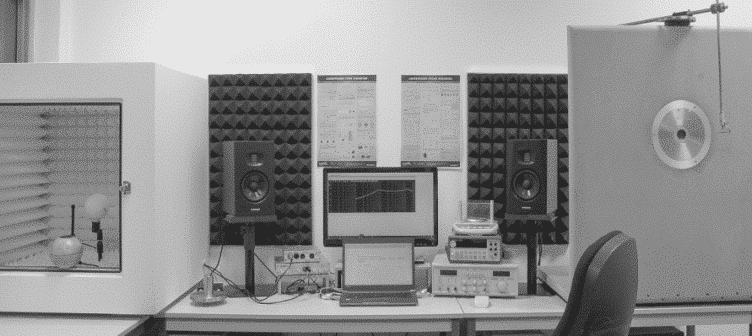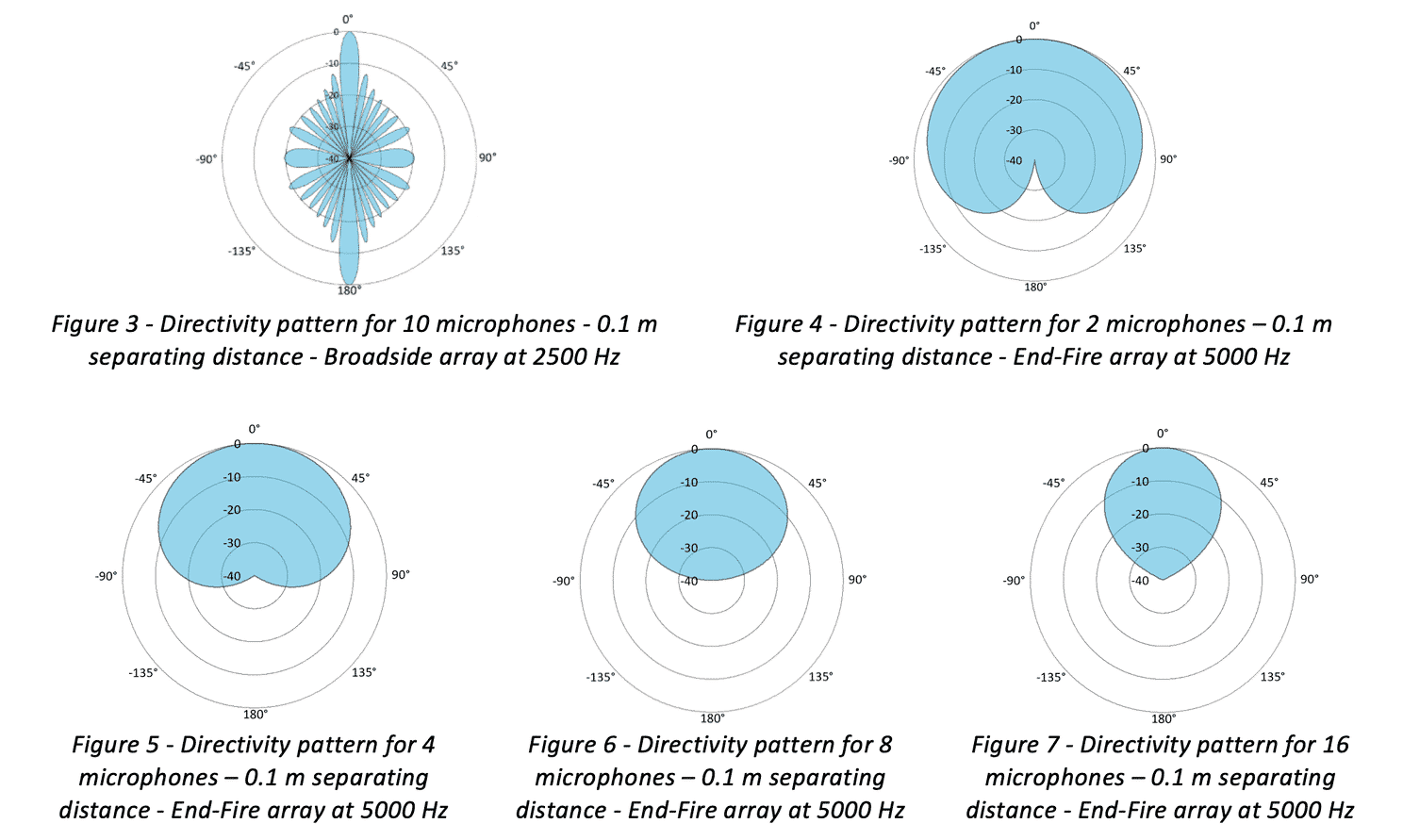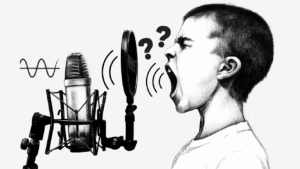
In noisy environments, accurately picking up sound from a specific location is often a challenge. Since using conventional directive microphones may sometimes not be adequate or sufficient, beamforming techniques are nowadays widely considered in the audio industry. Focusing on 1-dimensional arrays, two well-known arrangements, named Broadside and End-Fire, simply consist of multiple omnidirectional microphones separated by a certain distance (fixed in the simplest cases). For the first configuration (illustrated in Figure 1), microphones are configured perpendicularly to the incoming wave direction, and the simplest audio operation can just be a summation (fixed array case). In the second configuration illustrated in Figure 2, microphones are installed in the same direction to the incoming wave. Audio operations are in this case a delay, a phase reverser, and a sum.

The resulting signal suppression of these two techniques can be illustrated using a polar plot (Figures 3-7). This graph showing the relative attenuation as a function of the angle of incidence, we can obtain (depending on the frequency studied) a very strong beam created by Broadside arrangements when many microphones are used (10 in the example shown in Figure 3). On the other hand, using two microphones in an End-fire arrangement will recreate a cardioid microphone solution (as shown in Figure 4), while increasing the number of microphones in this configuration (Figure 5-7) will tune the pattern to narrower directivities.

Let SELTECH assisting you in finding the best array configuration adapted to your application.
Review by:
– Frédéric Fallais, Acoustic Application Engineer
– Arthur D., Acoustic Technician

